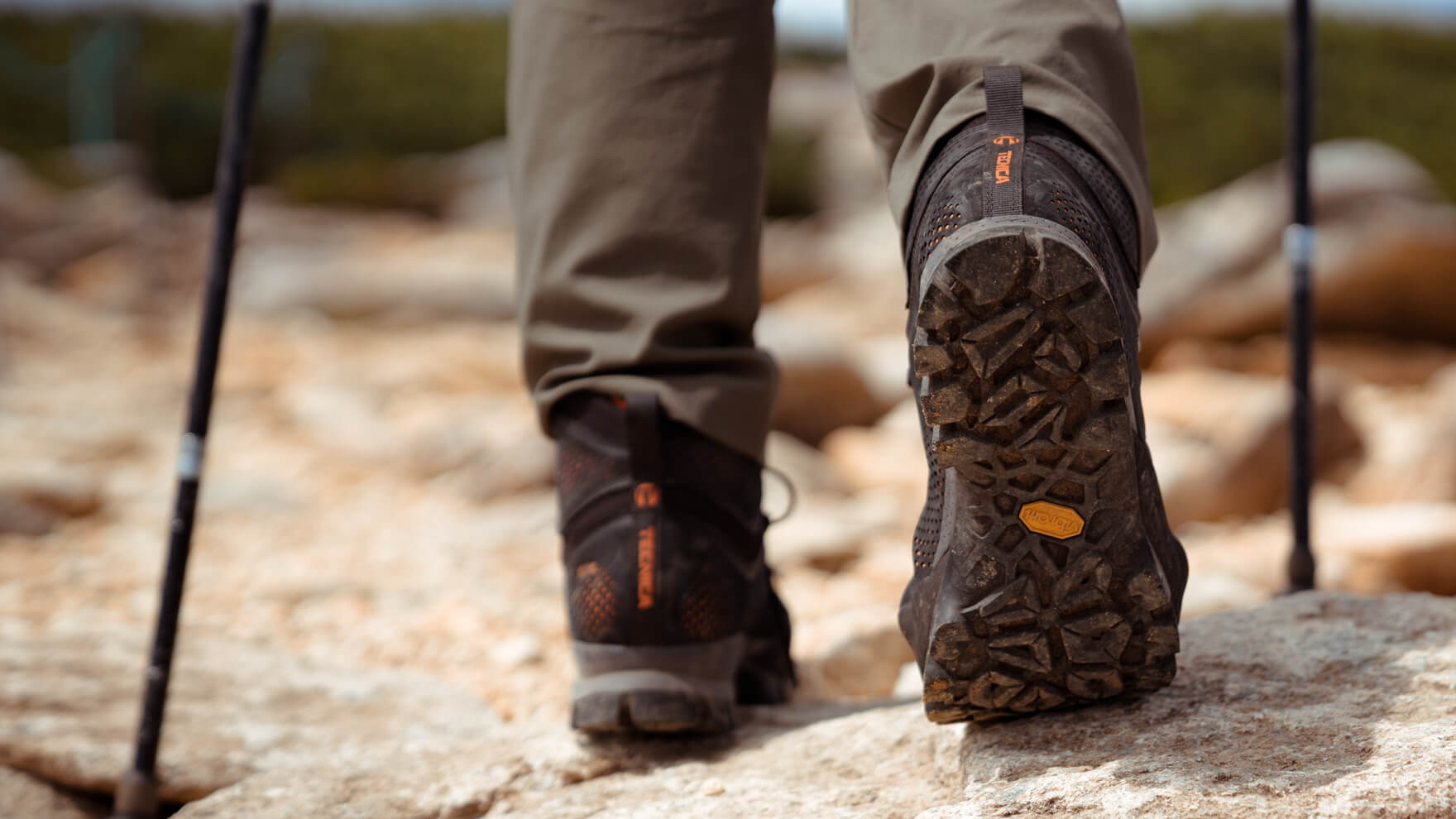
A mountain climbing writer who has worn over 100 pairs of shoes, and 6 points you should know before choosing a mountain climbing boot at a store.
Until now, this site has been investigating all the most important mountain equipment gear (trekking shoes and hiking shoes), which are extremely delicate items, and have been one of the most important things about mountaineering shoes (trekking shoes and hiking shoes), and have purchased all the popular and latest models for each purpose and type, and have actually walked by purchasing what they had expected.
This time, I would like to introduce all the carefully selected items to choose from, and all the shoes and boots that I really enjoyed buying (wearing). In the second half, we have compiled six key points to help anyone understand the trekking shoes that are difficult to choose the one that suits you, and not get lost in the store, so if you're interested, please check them out.
table of contents
- Recommended climbing shoes and trekking shoes by genre
- Best and Lightweight Hiking Division: Available from day hiking to fast packing. Lightweight model with attractive speed and moderate protection
- Best low cut category: Great for short and light activities and everyday wear
- Best Approach Shoes Division: The main focus is on technical terrain such as rocky areas, but there are actually many models that are perfect for hiking.
- Best Traction Trekking Division: A versatile model that is ideal for carrying luggage at a hut and walking on the mountain trail
- Best Alpine Trekking Division: Responds to a certain amount of burden, providing maximum ability through technical routes
- Best Long-Term Traction Trekking Division: Ideal for long-term tracing with heavy loads such as staying in a tent
- Best Long-Term Alpine Trekking Division: Perfect for long-term traversing on technical routes including harsh rocky areas, carrying heavy loads such as tents.
- Best Winter Division: Ideal for winter mountain climbing, including even the harsh winter seasons
- Best Cost Performance Category: KEEN Circadia Waterproof (Low/Mid)
- How to choose: 6 tips to choose trekking boots wisely
- Point 1: Types of mountain climbing boots - Learn about each person's strengths and weaknesses and mountain climbing styles -
- Point 2: Upper material - Decide whether it's synthetic fiber, leather, or combination depending on the climbing style.
- Point 3: Midsole - Determine the hardness based on the route and the weight of the luggage you carry on your back -
- Point 4: Outsole - Choose a non-slip (grip) and easy to step on (traction)
- Point 5: Weight - Lightness is justice, but let's also know what to lose in exchange for "lightness"
- Point 6: Other good things to check
- Summary: Only your feet will teach you the best solution to choosing shoes
Recommended climbing shoes and trekking shoes by genre
Best and Lightweight Hiking Division: Available from day hiking to fast packing. Lightweight model with attractive speed and moderate protection
1) La Sportiva Ultra Raptor II Mid GTX
Favorite points
- lightweight
- Midsole with plenty of cushioning and stability
- Supportive yet flexible ankles
- Ease of walking from trail running shoes
- Excellent protection
Interesting points
- The outsole lug is slightly shallow, so there is some concern about grip on wet roads or deep muddy.
- It's not enough if you expect too much of a trail running shoe-like feature (light, high cushioning, and high resilience).
These boots were created after a complete review of the Ultra Raptor series, which was originally Sportiva's classic trail running series, as fast and light hiking boots. While continuing to carry on the charm of lightness, cushioning, stability and toughness that are typical of Ultra Raptor as a trail running shoe, it also adds the high support and protection (waterproof and breathable) of mountain shoes, making it the best lightweight hiking boots for me, who want to be able to do both hiking and running comfortably on day trips.
Despite the flexibility of the sole that you can be bent by hand, the TPU heel cup that supports the heel keeps you stable even on long walks, and the comfortable padded panel that wraps around the ankles provides the support and comfort of a hiking boot. At the same time, the upper heel (Achilles tendon) is made of elastic material to ensure the movement of the ankles (photo below).
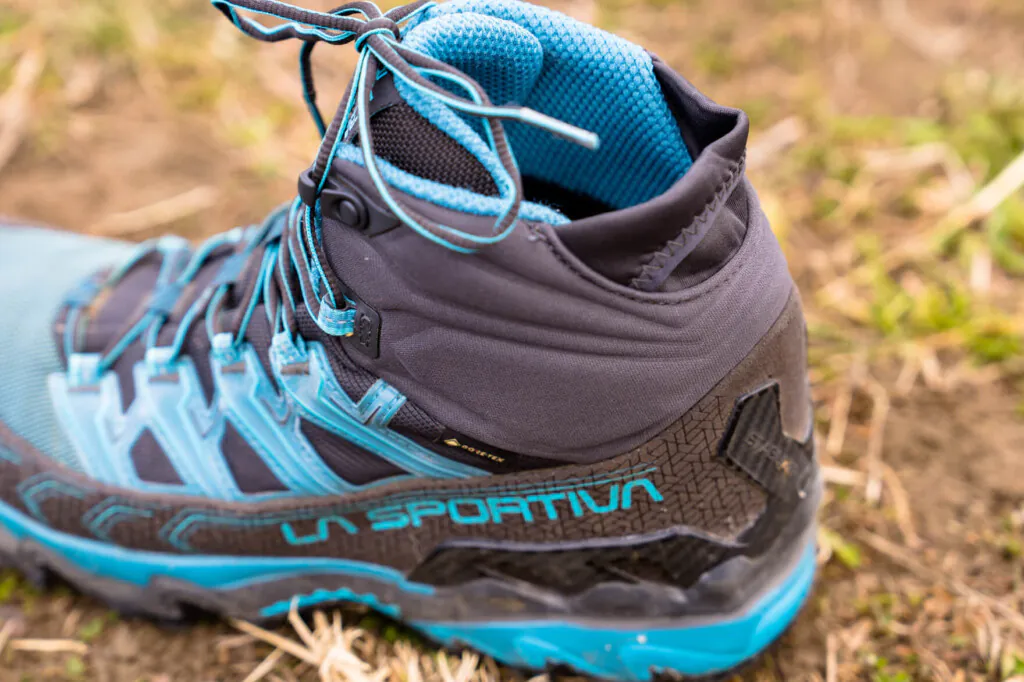
Despite the firm hold of the heel, the back of the ankles is dented and easy to move, making it comfortable to move even with speedy actions.
However, if I had to say that, I couldn't help but feel that the grip was a bit disappointing. The depth of the rug is shallow for a mountaineering boot, and although it has a very good grip on dry terrain, it can slip slightly on wet roads or deep muddy areas, so I'm a bit worried. It also has a slightly less durability due to its sticky grip.
However, even so, it's not too bothering me when viewed as the overall level of perfection. the La Sportiva Ultra Raptor II Mid GTX is sure to be a satisfying pair of shoes , as it offers top-class performance in many ways
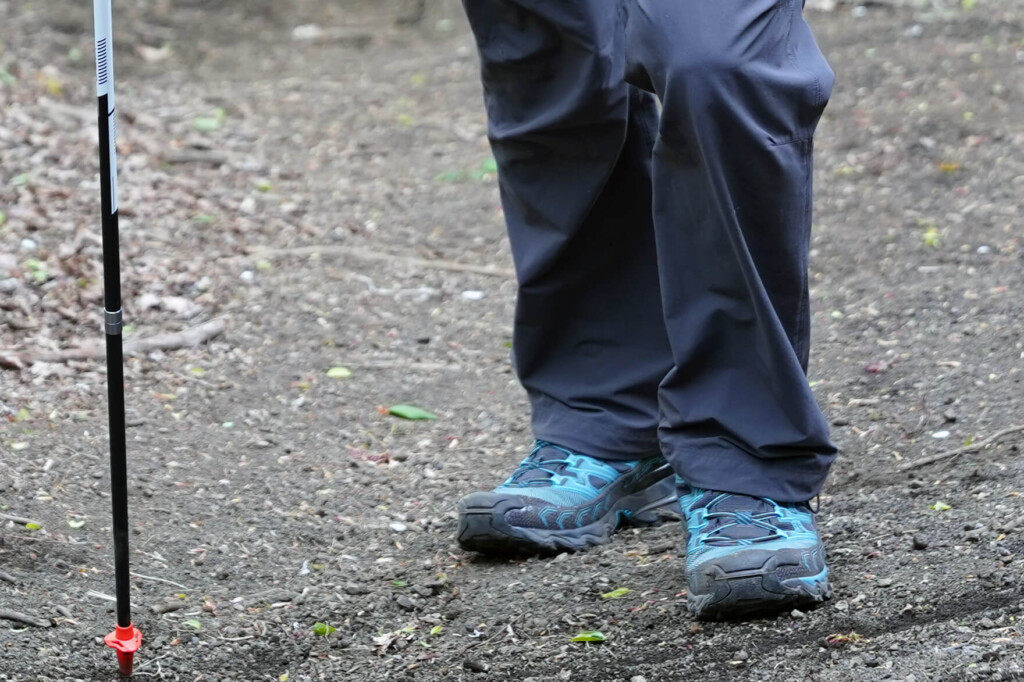
2) Salomon CROSS HIKE 2 MID GORE-TEX
Favorite points
- Comfortable upper with a wraparound fit
- If you hike with light luggage, it's comfortable to walk and run, and the balance between lightness and stability is good
- A midsole with excellent shock absorption that can handle a certain amount of heavy load and long distances
- Outsole for peace of mind even on rough roads
- Enough protection
Interesting points
- The lightness of a trail running shoe and the ease of running is slightly modest.
This is also a mid-cut lightweight hiking shoe based on the sole structure of Salomon's classic trail running shoes, SPEEDCROSS series, and by adding the support and protection necessary for trekking shoes around the upper and ankles, this shoe provides excellent agility, comfort and durability. I found out after choosing one, but it seems that I have no eye on the shoes that are based on these trail running shoes and add the strength necessary for hiking. Considering the compatibility with the ever-more weight reduction in luggage, this trend is by no means the only one.
The previous model was also amazing, but this second-generation model has been tuned and evolved slightly from the previous model to climb a mountain, resulting in a higher level of balance as a "light hiking boot that can also be run" that is a "lightweight hiking boot that can be driven." Although it is lightweight at 413g per foot, the upper material is robust and comfortable, providing excellent mobility, comfort, and high protection performance. The midsole is equipped with EnergyCell™+, which combines excellent rebound power and shock absorption and durability from trail running shoes, allowing for comfortable travel, whether walking or running. The outsole, which uses Mud Contagrip®, provides outstanding grip even on mud, slippery roads, has also improved braking performance due to the redesigned lug pattern. By updating the details from the previous model, it has become a tougher pair of shoes that can be walked comfortably even on long-term mountain trips.
If you'd like to know more, please read the reviews I wrote previously below.
Related Articles
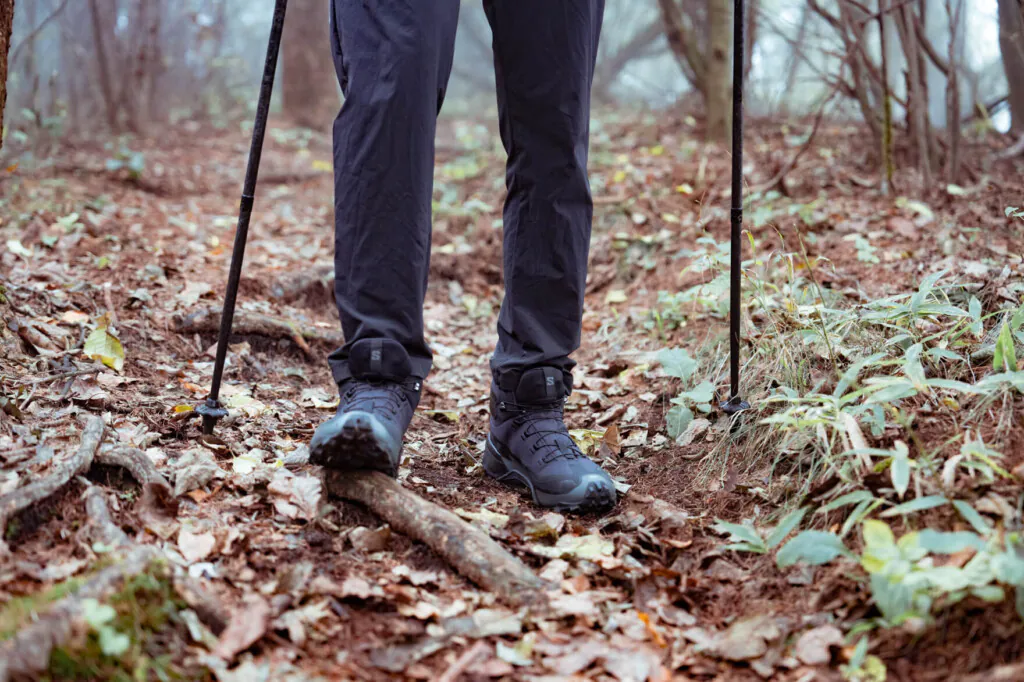
Unfortunately, I missed the award, but I also recommend this [Best Lightweight Hiking Category]
- on Cloudrock 2 Waterproof
- ALTRA OLYMPUS 5 HIKE MID GTX
- Hoka one one Anacapa Mid GTX
- KEEN Nexis Evo Mid Waterproof
Best low cut category: Great for short and light activities and everyday wear
Salomon X ULTRA 4 GORE-TEX
Favorite points
- It is so resistant to blurring that it's hard to believe it's a low cut, and is highly stable that is less likely to get injured.
- Grip power that allows you to land and step on stable steep slopes and wet terrain
- Despite its stability-oriented structure, it is lightweight
- Quick and easy to put on and take off the lace system
- Sturdy protection protects your toes and other surroundings from sharp obstacles
- Stable waterproof and breathable permeability due to GORE-TEX
Interesting points
- The tongue is not fixed so it's a bit difficult to wear
The latest model of Salomon's popular hiking shoe series, X Ultra series, is a groundbreaking hiking shoe that offers incredibly high stability and support in its low-cut style. This unique and highly complete pair of shoes with mid-cut support, low-cut lightness, making it easier to walk in on complex terrain and less likely to get injured, making it a unique and highly complete pair of shoes that are unique and excellent hiking shoes.
The new ADV-C Chassis and Active Support midsole combine to support joints without compromising the freedom of ankle movement. It reduces the risk of injury and allows for stable foot movement on technical trails with severe undulations and unevenness. The deeper lug "Contagrip® MA" outsole provides firm grip on slippery terrain such as muddy and wet rocky areas.
Despite being lightweight and agile, low-cut shoes the SALOMON X ULTRA 4 GORE-TEX , making it a perfect pair for not only hikers with concerns about their feet, but also for a wide range of hikers who enjoy hiking on a day trip.
There is also a detailed review, so please refer to the following.
Related Articles
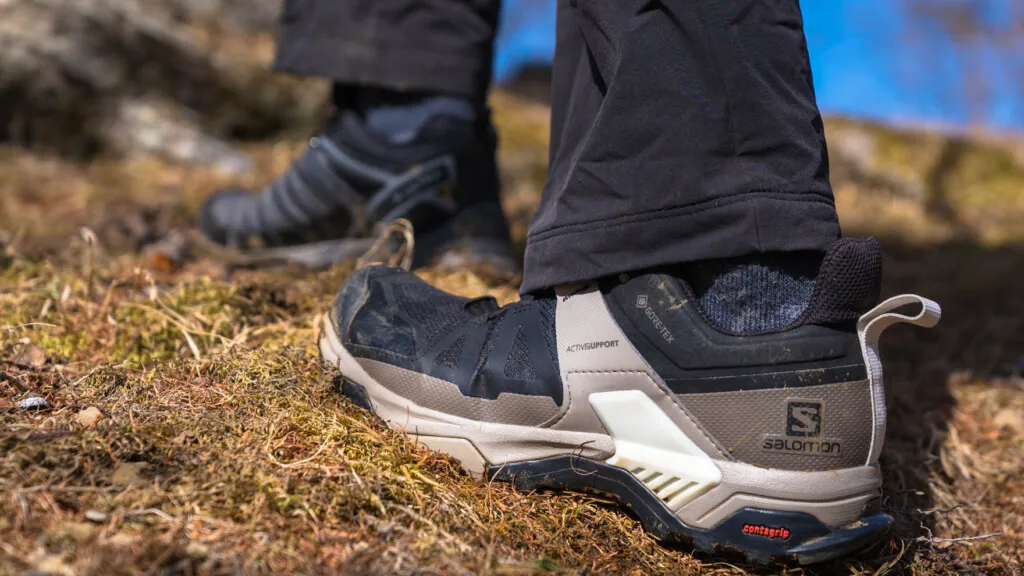
The outer resin parts protect the ankle twist, making it extremely stable despite its low cut.
Unfortunately, I missed the award, but I also recommend this [Best Low Cut category]
- MAMMUT Sertig II Low GTX
- ASOLO Grid GV
- hoka one one KAHA 2 LOW GTX
- MERRELL MOAB SPEED GORE-TEX
Best Approach Shoes Division: The main focus is on technical terrain such as rocky areas, but there are actually many models that are perfect for hiking.
1) La Sportiva TX5 GTX
Favorite points
- Excellent balance and multifunctionality, regardless of whether you walk, climb, or run on uneven terrain
- Comfortable to wear
- Excellent grip traction
- Ankles that combine support and mobility
- Excellent protection and waterproof
Interesting points
- While it is excellent in versatility, there are some parts that are inferior to the specialized models of each category.
The TX5 GTX is known for its "Traverse" series, the company's approach shoe lineup, but its true nature is not just pure approach shoes, but rather an extremely unique climbing boot that can be called the "ultimate multi-purpose shoes (boots)" that can be used for a variety of purposes by removing barriers such as hiking, climbing, and running.
To put it simply, it has an exquisite balance, with the ability to climb rocks more than hiking boots and more comfortable walking than approach shoes. The high level of perfection as a shoe was instantly shot through my chest. The nubuck leather upper has a good texture and is highly durable, making it soft and fits perfectly with your feet. The ankle area is made of Sportiva's familiar 3D flex system that protects your ankles while still making it easy to move around, and the highly reliable Vibram megagrip outsole allows you to approach technical terrain, not only on irregular terrain, but also on rocky terrain, wet roads, and light snowy ground, and with long summer hikes, you can always walk safely and comfortably.
While providing solid stability over rough terrain, the sole is not as hard as in full-scale climbing boots and the weight is not that heavy, making it even more amazed at how easy it is to walk. As mentioned on the official blog, it is not an exaggeration to say that it is actually a hidden gem that can be recommended as your first pair of mountain climbers for beginners. By the way, there are low-cut models of these boots, so if you prefer regular approach shoes, you can try that, or try a sibling model such as the TX 4.

The comfortable pads have moderate mobility around the ankle, making it easy to walk in without obstructing ankle flexion.
2) Zamberlan Salate 5.13 GT RR
Favorite points
- Microfiber material around the ankle and shoelaces from toe to ankle give it a high fit like a sock
- High protection performance
- High shock absorption and torsional rigidity midsole
- Excellent brake traction with Vibram megagrips
Interesting points
- It's a little heavier than low-cut shoes
- Compared to mid-cut boots, it lacks ankle support slightly
In 2022, Zambaran's latest approach shoes, combining the craftsmanship spirit of Italian mountaineering socks with modern ideas, was passionate. At first glance, the Salate 5.13 GT has a gaiter structure made from stretchy microfiber around the ankle, making it an approach shoe that gives you a great fit like a sock. What's more, this gaiter not only provides a fit, but also light protection to the ankles and prevents gravel from entering, making it a smart construction that can be used to make a single bird with a single stone. It's hard to find anything that surpasses this shoe right now in terms of its incredibleness, which is light as a low-cut shoe, but also the stability of a mid-cut boot.
Made from lightweight yet durable suede leather, it also provides excellent protection around the shoes. With Vibram's megagrip compound and a dual density EVA midsole, the Vibram® Pepe sole ensures cushioning and torsional rigidity while also providing no issues with braking performance. The moderate hardness allows for stable walking and fine holds on rocky areas, making it versatile for a wide range of activities, including approaches to short ridge routes, trekking and hiking.
The concept of "From The Car To The Top" is not just for the sake of innovative fast trekking shoes. Of course, I acknowledge the strength of my habits, but I am sure this shoe has a comfortable feel that can never be imitated by ordinary approach shoes. The moment I saw this, I thought it was perfect for descending shoes when climbing a river.
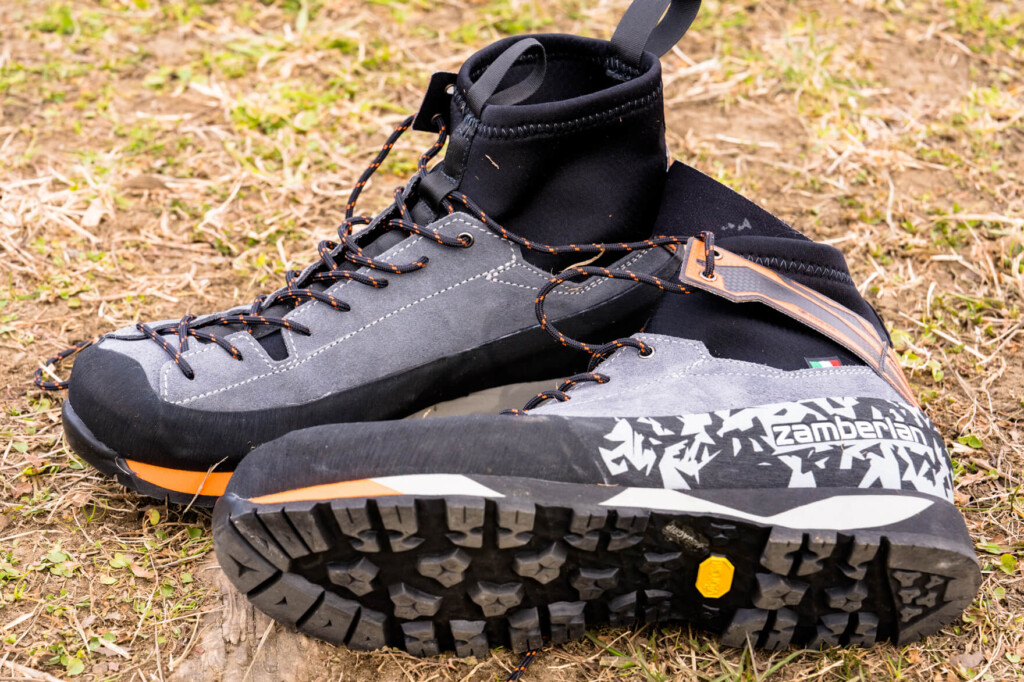
The stretchy ankle material provides a comfortable fit. It also functions as a gaitor.
Unfortunately, I missed the award, but I also recommend this [Best Approach Shoes Category]
- SCARPA Mescalito GTX
- MONTURA YARU TEKNO GTX
- GARMONT Dragon Tail Tech GTX
- Arc'teryx Concealed FL 2 Gore-Tex
Best Traction Trekking Division: A versatile model that is ideal for carrying luggage at a hut and walking on the mountain trail
LOWA Baldo GT
Favorite points
- A hybrid of durable split grain leather and lightweight nylon fabric that is breathable and mobility
- X-LACING technology that secures the tongue in place
- Roller eyelets that smooth out the flow of shoelaces, and two-zone racing that allows fine adjustments to tighten the tightness to improve fit
- Vibram TRAC LITE II outsole with excellent traction and a wide range of terrain
- GORE-TEX with excellent waterproof and breathability
- The last development of the WXL size that is common among Japanese people
Interesting points
- Low breathability (breathability)
Although there is no need to worry about rough rocky areas, if you are walking long distances on mountain trails with a reasonable amount of luggage (just staying in a hut), unlike hiking boots that are so comfortable to wear, these are the occasions where trekking boots have a sturdy upper that protects your feet from obstacles, and sole with a hard and cushioned sole that can withstand impacts and unevenness.
For lightweight trekking boots that are as strong as mountaineering boots, while still being easy to walk in and comfortable, Bardo from LOWA, a prestigious German boot manufacturer that celebrated its 100th anniversary since its founding, was my best choice.
The skillful upper material is covered with heavy leather, but blends fabric with flexible, lightweight and breathable fabrics on the instep and ankles, providing both high wear resistance, ankle support and mobility. The tongue and shoelaces are studded with unique fitting technology, allowing for comfortable walking with a high fit. Full-scale climbing boots in this category and above usually require a certain amount of time to get used to wearing them, but for Bardo, it must be thanks to this detailed ingenuity that they quickly fit in well, with almost no need for this.
The midsole is made of polyurethane, which is more durable and harder than EVA, which is used in hiking shoes, and it also holds heavy loads with a stable cushion on the sole of the foot. Personally, I like the fact that the toes of the outsole have a climbing zone.
With solid durability and protection, it is comfortable to wear all day long, and its all-round ability to suit any road surface, making it a trekking boot that serves as the opening for serious mountaineering boots, and its high versatility (although there are individual differences), it seems unlikely that there would be people who can walk in almost every area of Japan with just one pair.
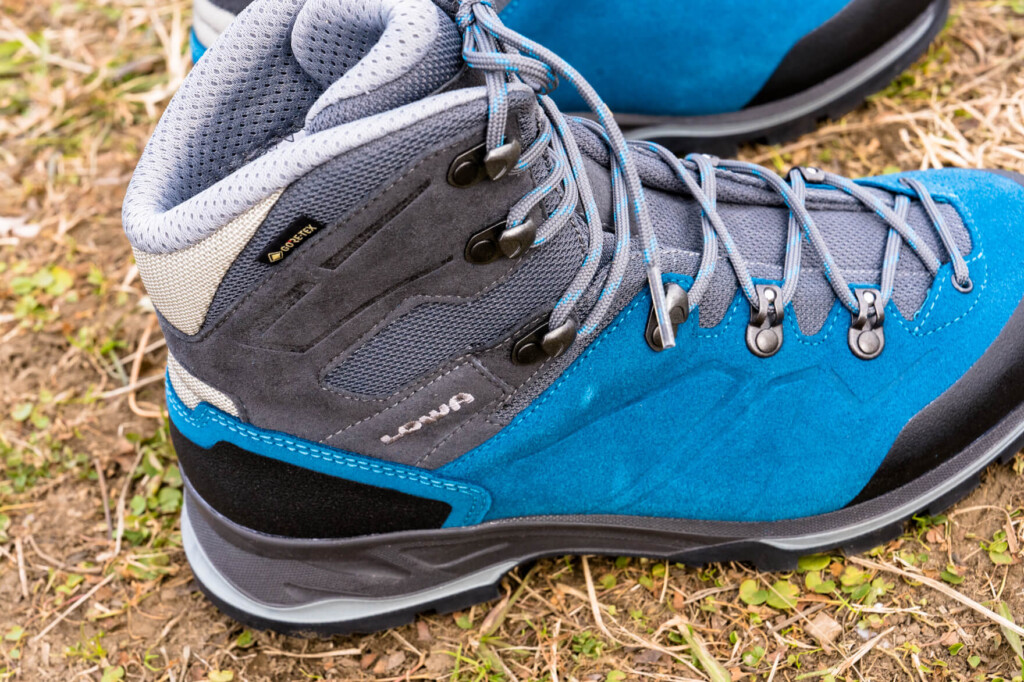
The hybrid upper made of durable suede leather and lightweight synthetic fabric is easy to walk in and provides excellent protection.
Unfortunately, I missed the award, but I also recommend this [Best Traction Trekking Category]
- MAMMUT Ducan High GTX
- SCARPA ZG Trek GTX
- Zamberlan Bartolo Light GT
- La Sportiva Trango Tech Leather GTX
- ASOLO Falco GV
Best Alpine Trekking Division: Responds to a certain amount of burden, providing maximum ability through technical routes
La Sportiva Equilibium ST GTX
Favorite points
- Fits that wrap around the entire foot
- It's big but light
- Ankle circumference with excellent balance with flexibility and support
- A sturdy sole that can be used to attach crampons to rocks.
- Outsole is calculated from landing to kicking off, providing stable grip
Interesting points
- Easily loosen the shoelaces
- In wet rocks and tree roots, the grip becomes weaker (compared to hiking boots, etc.)
- Expensive price
Italian mountain shoe manufacturer that has produced groundbreaking shoes that overturn traditional stereotypes, and is constantly taking on the challenge of innovating mountaineering boots No pair of shoes is as full of everything the modern mountain climbing styles of recent years are looking for, than the Equilibium series of new technical mountain boots.
Combining incredibly light, comfort and durability, these boots combine the strengths of Alpine boots, which require solid stability on rocky and snow, with the strengths of light, easy-to-walking trekking boots. Furthermore, the company's wide variety of knowledge from the company's wide range of fields, such as trail running shoes and approach shoes, making them truly a mountaineering shoe that "takes the best of outdoor shoes," and it's no exaggeration to say that it was only possible by Sportiva, who has made top-class shoes for all kinds of mountain activities.
With this pair of shoes, it's not too big even in mountains around 2000m, with lots of forests. However, even in alpine 2,000 to 3,000m-class alpine, with a wide variety of terrain, from rocky areas to remaining snow, you won't feel any sign of it being poor. As you can see , Equilibilium is a balanced boot that is highly balanced with a level of safety and comfort that makes you want to wear it anywhere in Japan. However, even so, the rigidity of the sole is flexible compared to a full-scale traversing model, so if you are going to traverse the rocky ridge for a long period of time with a considerable burden on your back, I think the models you will be looking at will be more ideal.
We have also thoroughly analyzed this in the following reviews, so please refer to it if you are interested.
Related Articles
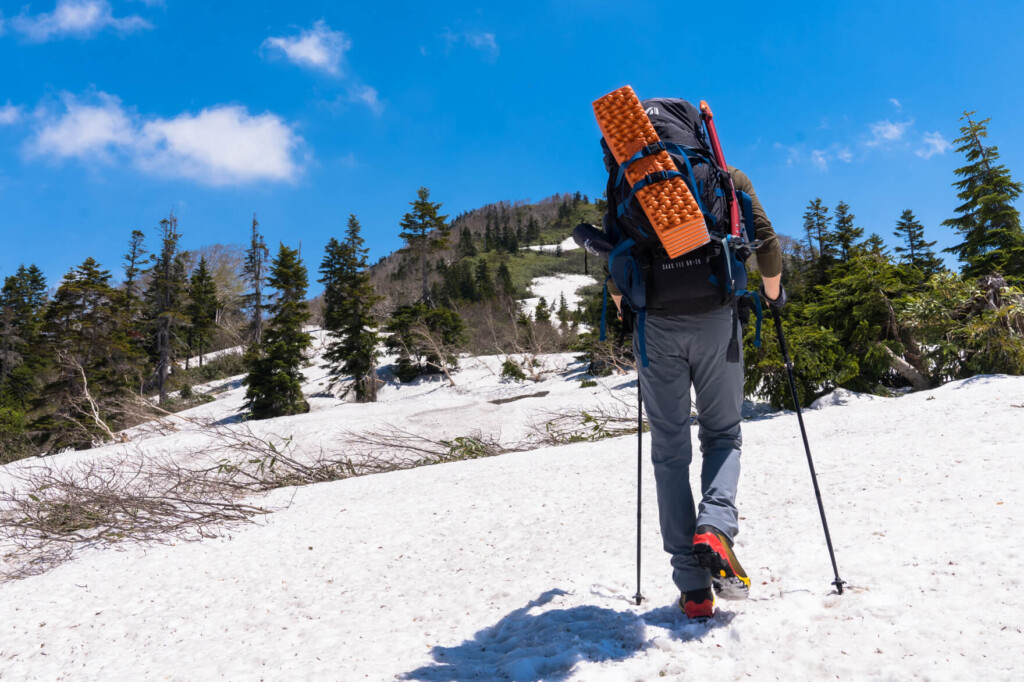
Unfortunately, I missed the award, but I also recommend this [Best Alpine Trekking category]
- Arc'teryx TR Gore-Tex
- ASOLO Erd MID Leather GV
- GARMONT Vetta Tech Gore-Tex
- SCARPA Marmorada Pro HD
Best Long-Term Traction Trekking Division: Ideal for long-term tracing with heavy loads such as staying in a tent
LOWA Ticum II GT
Favorite points
- Highly rigid sole that can withstand heavy loads
- Durable, comfortable and easy to wear
- Racing system that provides excellent fit
- Excellent stability and support (especially around the ankle)
- Outsole with excellent grip
- Highly waterproof
Interesting points
- Since there are no climbing zones on the crumpon or toe, it is not expected to be too steep.
- weight
If you want to do long traverses for more than a few days in a tent, the backpack will inevitably weigh nearly 20 kg. When it comes to boots that can withstand this heavy load every day, it is ideal to not only provide durability in the upper, but also provide even more rigidity in the sole and complete support around the ankle. From this point on, the boots should have a sole that they can no longer bend them with their own hands. My God climbing boots in this class were the Tecum II GT
In any case, my feet stabilize when walking with heavy loads. I love that no matter how heavy you carry, there is no need to worry about injuries or fatigue. The sturdy yet highly flexible upper structure made from suede leather is not too wide, but too narrow, and the toe space is moderately secured, providing a comfortable fit. This exquisite fit is impressive, combining it with the shoelaces and shoe tongue system that can be secured in a secure correct position and moderate tightening. It also covers a fairly high position on the ankle with stiff leather and pads, providing excellent support around the ankle, making it a better match for long trails on long trails that are carried by heavy loads.
On the other hand, it is not intended to be installed with a (semi) one-touch clampon, and the lug pattern on the outsole is more conscious of muddy than rocky areas, so technical routes including steep rocky areas are not intended to be divided (this shows the difference from Italian brand boots, which is interesting).
REI is the most famous outdoor shop in North America, and although you rarely see European outdoor brands there, I remember seeing LOWA shoes often. At the time, I had no idea why, but now that I think about it, I feel that LOWA suits America's long trails, which is suitable for "walking long routes safely and comfortably, may not be steep, but may be very steep."

The ankles are covered in sturdy leather, and the ankles are firmly fixed, giving you a great sense of security when walking.
Unfortunately, I missed the award, but I also recommend this [Best Long-Term Trekking Category]
- La Sportiva Trango Tower GTX
- MAMMUT Kento Advanced High GTX
- SALEWA MTN Trainer Mid GTX
Best Long-Term Alpine Trekking Division: Perfect for long-term traversing on technical routes including harsh rocky areas, carrying heavy loads such as tents.
SCARPA Libele HD
Favorite points
- Despite its highly durable and solid body, it is surprisingly lightweight and flexible.
- A comfortable upper with excellent fit
- Moderate ankle support
- A highly rigid sole and climb-oriented lug pattern give you peace of mind on rocky ridge routes
- Vibram outsole with excellent grip and traction on rocky areas and non-slip on irregular terrain
- Warm 37.5 fabric liner for even light snowy seasons
Interesting points
- The HDry waterproof and breathable membrane is less waterproof than GORE-TEX.
- The shoelaces are short for some reason
- price
It is suitable for walking the toughest and most technical routes in the snowless season, and is a category that is intended for long-term trajectory such as the large, strict rocky ridges of the Japanese Alps, or variations that are higher than the general trails. If you're looking for traverse hiking boots that work well on rocks, rubles, mud, ice (even a bit of snow), and trails, then for me right now, this Libere HD is nothing else.
Above all, it is top-class and sturdy, yet surprisingly light and easy to walk in. When climbing safely with heavy luggage on your back, sturdy boots are inevitable, but it is common knowledge that a reasonable amount of weight is inevitable. It is amazing how much it weighs less than 700 grams per foot (and Scarpa has even lighter siblings).
It would be nice if it were just light, but this boot also has the excellent upper structure, "Sock-Fit XT" that ranges from the instep to the heel cup, giving it a comfortable fit that wraps around your feet. The padded ankle area is also supported, yet relatively free to move and comfortable. The 37.5 fabric on the lining provides moderate insulation and breathability, making it easy to handle routes with slight snow, such as early winter and the remaining snow season. And the rocker-shaped curved sole, which was introduced from trail running shoes, helped to reduce the difficulty of walking, which is common with solid mountaineering boots.
The midsole is a hybrid structure that skillfully maps two types of TPU materials with different densities in areas that provide shock absorption and lightness, and areas that provide support and stability. The outsole is particularly hard, and the best sense of security when standing on rocky areas is available. The lug pattern is also divided into three areas, divided into features such as stepping in, stopping, and gripping, with the climbing zone on the toe to provide maximum grip, the outside is stepping in, and the center, inside and heels are areas that maximize braking performance.
If there's one thing that's more to want, then it's that its unique HDry membrane cannot be so reliable. We recommend applying a water-repellent spray more frequently than usual. In any case, for me, the SCARPA Libere HD combines the security of authentic mountain boots with the ease of movement and comfort of lightweight trekking shoes, making it a perfect boot for mountaineering and hikers who want uncompromising performance in three seasons of hard climbing.
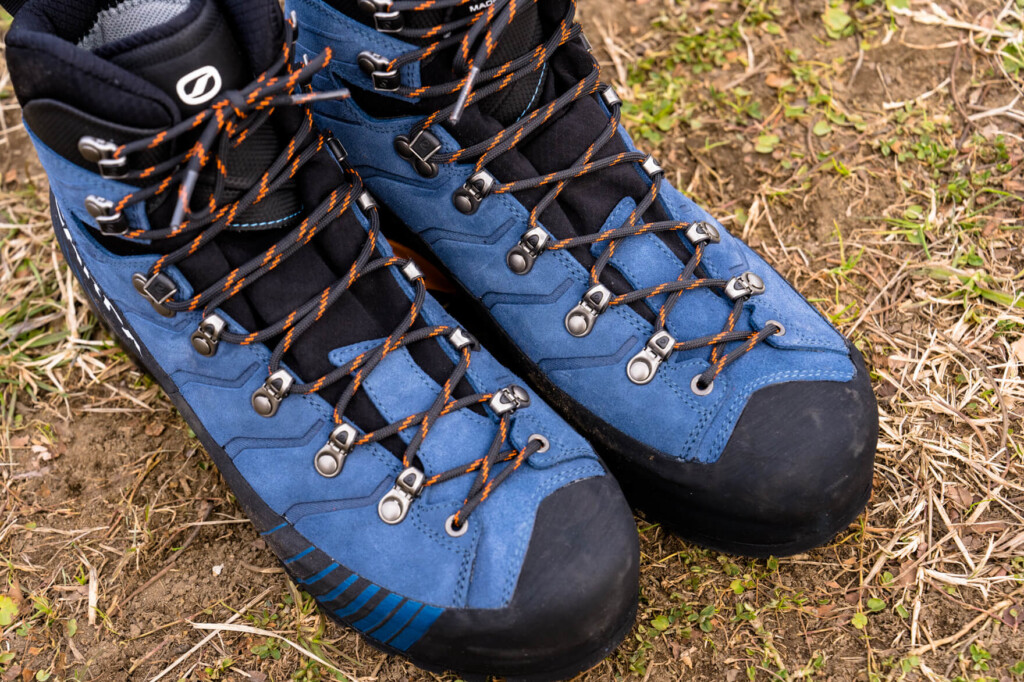
While the overall fit is solid, the flexible and supple tongue part gives an excellent fit for the entire foot.
I unfortunately missed the award, but I also recommend this [Best Long-Term Alpine Trekking Category]
- Arc'teryx Arc'teryx LT Gore-Tex
- ASOLO Elbruce GV
- La Sportiva Trango Alp Evo GTX
- LOWA Chevedare EVO GT
Best Winter Division: Ideal for winter mountain climbing, including even the harsh winter seasons
La Sportiva G5 EVO
Favorite points
- Top-class lightweight winter boots for winter mountains
- Highly heat-retaining properties that are safe even in harsh winters
- Boa system provides excellent fit and quick access
- High mobility around the ankle
- Toes with roomy and less likely to get cold
- The double boots with a snow gaiter upper make it highly insulating, snowproof, waterproof and breathable, durability and wear resistance
- Ease of walking on snowy trails and climbing performance ideal for ice climbing
Interesting points
- Very expensive
- It cannot be said that the bore is not damaged at all.
- Waterproofing of the front velcro and zipper
I never imagined that mountain boots for winter mountains would be so light.
The La Sportiva G5 Evo is the ultimate pair of shoes with all the features you'll need for winter mountain boots (unless you're considering the price). Until now, I have worn regular leather mountain boots and double-layered plastic boots for winter mountain boots during the harsh winter season, but I realized how easy it is to use winter boots with snow gaiters and Boa system that all of these benefits, and also enjoyed the essence of lightweighting, which has been cut to the limit thanks to Sportiva's high-technology capabilities. The quality is so high that you can't think you can't look forward to any more with winter mountain boots.
Anyway, it's smooth and comfortable, whether climbing on steep slopes or walking normally. One of the highlights of these boots, the shoelaces-less Boa system allows for quick and easy on and off without removing the gloves, and even more, it allows you to always set the same high fit as shoelaces. Once I know this, I won't be able to go back to other boots. .
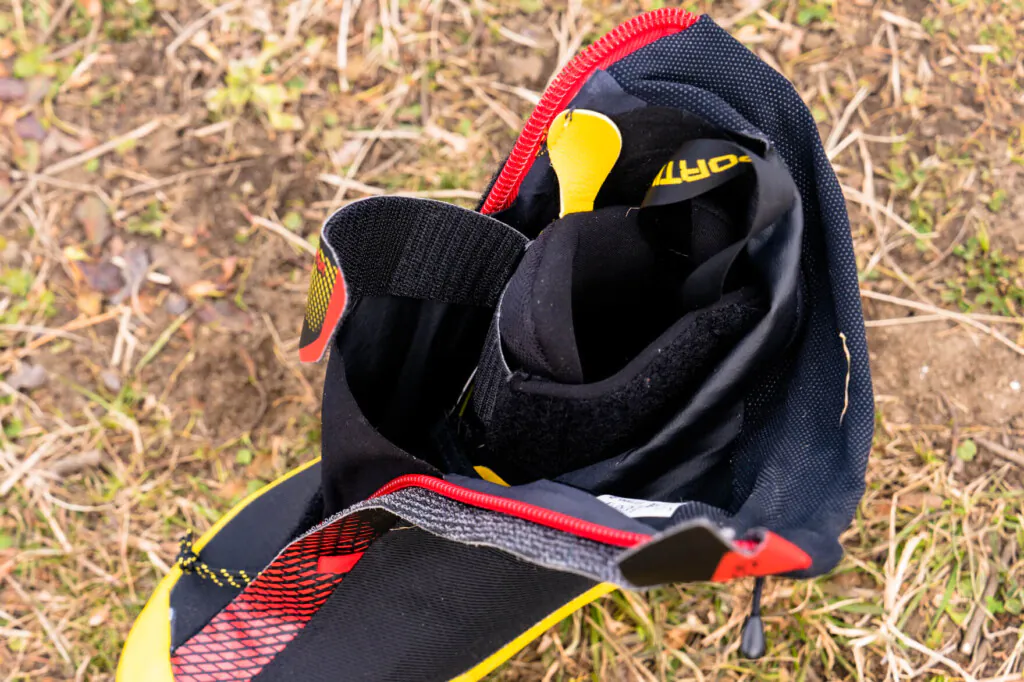
Double structure of inner boots and outerwear. The outer Boa tightens the entire foot, so there is no need for shoelaces and the fit is good.
For a Sportiva, there is relatively little toe space in the toe area, and the GORE-TEX INFINIUM™ THERMIUM™ technology warmly wraps around the toes, making it extremely warm. When you wear a clamp, toes tend to be pressured and block blood flow and get cold, but these measures have become quite thorough. Furthermore, as an improvement from the previous model, the Boa is placed on the outside of the gaiter, allowing you to quickly tighten the boots when climbing, and pull the knob to loosen them when not climbing, so in that sense, there is less concern about cold feet than any winter boot.
Of course, it has ample rigidity around the sole and upper for mountain climbing during snowy seasons, and it goes perfectly with the clamp.
If the main focus is snow hiking or snowy mountain climbing to the heights of the forest limit, leather boots like the company's Nepal Cube GTX may well play a role, but if you look to pass through technical rock-ice mixed terrain and ice climbing in the future, the G5 Evo will offer better performance in terms of lightness, insulation, mobility and convenience. It is definitely an ideal choice for mountain climbing in Japan at 3,000m level during harsh winters, as winter mountain boots for long periods of crampons and working for long periods of time, or for ice climbing, but even for normal snowy mountain climbing, it is not over-spec. Even if you are a mountain climber who is making their debut in winter mountains, if you have enough budget, we recommend choosing this pair of shoes that brings together the best in cutting-edge technology.
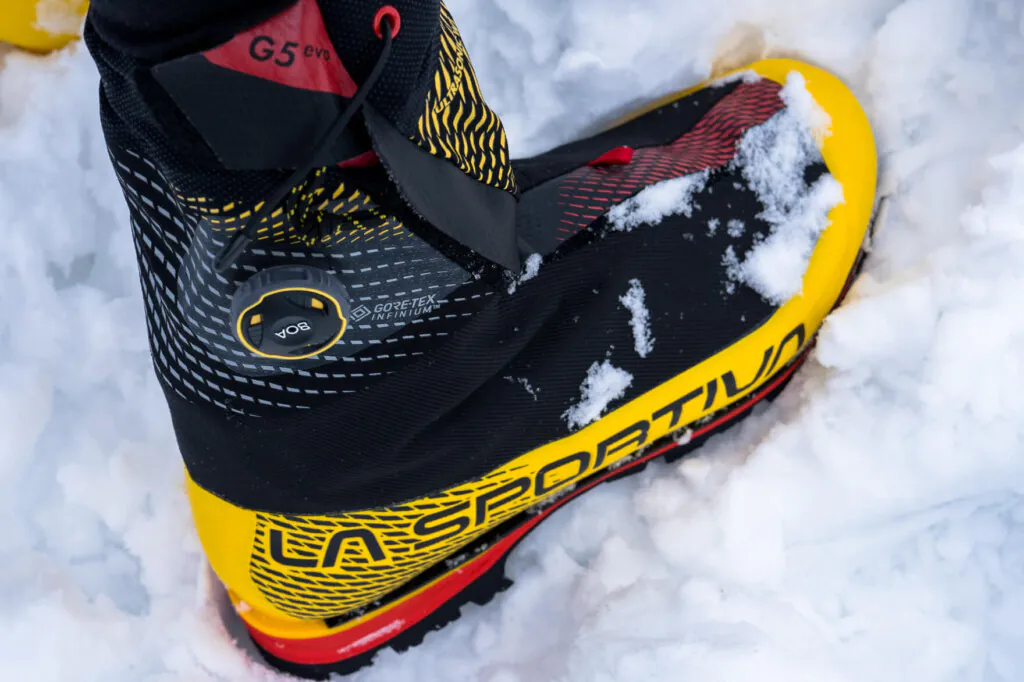
Unfortunately, I missed the award, but I also recommend this [Best Winter Category]
- La Sportiva Nepal Evo GTX
- SCARPA Mantatech GTX
- Zamberlan Mountain Pro EVO GT RR
- ASOLO 6B+ GV
- LOWA Alpine Expert II GT
Best Cost Performance Category: KEEN Circadia Waterproof (Low/Mid)
Favorite points
- Low-priced models from brands with solid technical capabilities, track record and design skills
- It has the performance required for hiking boots, including waterproof and breathable properties, but is priced low.
- Convenient as a daily walking shoe
Interesting points
- It's pricey, so it's unclear how durable it is, whether it can be worn for a long time.
- It's a little heavier than cutting-edge hiking shoes
- The grip of the outsole is also quite good compared to the top level.
How to choose: 6 tips to choose trekking boots wisely
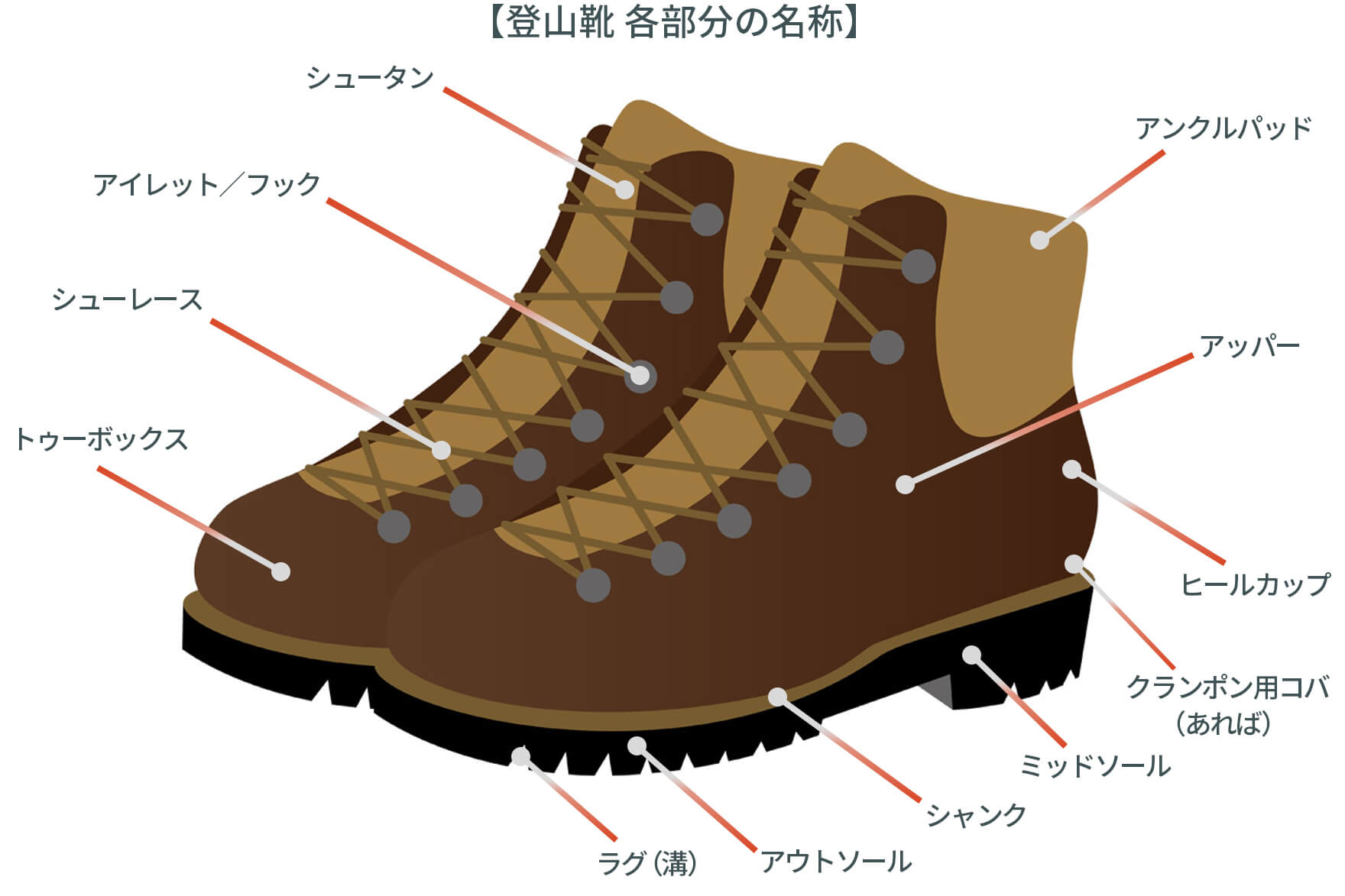
Point 1: Types of mountain climbing boots - Learn about each person's strengths and weaknesses and mountain climbing styles -
With the recent diversification of outdoor activities, it is not hard to imagine that climbing boots are increasingly becoming more and more genres, such as the purpose, walking location (terrain), and walking style. When you're about to buy your own shoes, you probably don't have a chance to find out which type suits your style best by looking at the shoes on display in stores without any prior knowledge.
So, we have summarized the general classifications and characteristics of mountaineering boots in the table below, so we recommend that you first consider the rough type of mountaineering boots you should choose. Keeping this in mind, if you speak up to the store staff, you won't be directed in the wrong direction. Of course, this classification is not a unified or objective line that is applicable everywhere, and therefore some models may have vague boundaries or cover a wide range of areas, so be careful.
Comparison of types and features of mountaineering shoes (outdoor shoes)
If you've never been able to walk on unpaved roads and are not used to it (perhaps you won't be going to a difficult mountain all day), we recommend softer mountaineering boots, including hiking shoes On the other hand, trekking boots are versatile shoes that can cover the widest range of activities, from light mountain hiking to authentic rock ridges. There is a wide variety of options, including the softness of the shoes and the height of the ankle, making it suitable for those who are looking to start mountain climbing in earnest, or as a pair that gradually moves up from hiking shoes.
In cases where climbing steep rocky areas or traverse sideways in alpine mountains, where many areas exceed the limits of forests, such as the Northern Alps and Mt. Yatsugatake, alpine boots are used to take into consideration the climbing of rocky areas. This is also an increasing number of variations, from lighter models to heavy and harder types, so it's a good idea to consider the grade depending on how much luggage you carry with you.
Ankle height
There are three types of trekking shoes: low cut, mid cut, and high cut, depending on the range that covers the ankle. If you want to walk lightly with light luggage, a low cut is definitely easier to walk, but for those who are more burdened, those with steep or rough terrain, those with weak legs, or those who are prone to getting tired, shoes with higher support are more secure.
| cut | Low cut | Midcut | High cut |
|---|---|---|---|
| image | ![[Salomon] salomon X ULTRA 2 GTXR L37156000 L37156000 (BLACK/AUTOBAHN/ALUMINIUM/26)](https://images-fe.ssl-images-amazon.com/images/I/41EfJCboWzL._SS200_.jpg) | ![[Salomon] salomon Hiking Shoes X ULTRA MID 2 GTX L37077000 L37103200 (BETTLE GREEN/BLACK/SPRING GREEN/29)](https://images-fe.ssl-images-amazon.com/images/I/410YswGeHaL._SS200_.jpg) | ![[Salomon] salomon QUEST 4D 2 GTXR L37073100 L37073100 (DETROIT/BLACK/NAVAJO/27)](https://images-fe.ssl-images-amazon.com/images/I/51FVM-CsuoL._SS200_.jpg) |
| Lightness | ◎ | ◯ | △ |
| Ankle mobility | ◎ | ◯ | △ |
| Ankle support | △ | ◯ | ◎ |
| It is difficult for foreign objects to enter | △ | ◯ | ◎ |
| Not easily stuffy | ◎ | ◯ | △ |
| Suitable style |
|
|
|
Point 2: Upper material - Decide whether it's synthetic fiber, leather, or combination depending on the climbing style.
The entire upper part that covers the toes to the instep, heel and ankle of the mountaineering boots is called the upper, and the material and construction of this part affects not only the weight of the shoe, but also many important factors, such as comfort, fit, durability, waterproofness, and breathability.
Until a few years ago, models were the only choice that was covered with hard, heavy, natural leather, but now, with the introduction of Gore-Tex, a waterproof, breathable membrane, models designed with uppers made of light and soft nylon and synthetic resins are being developed one after another. These are the most popular styles that require lightness and speed, and are able to demonstrate their abilities in situations where speed, ease of movement and lightness are a priority. On the other hand, leather is still in good condition with heavy trekking alpine boots, which require durability. It is also waterproof, and if properly maintained, the material itself lasts longer than synthetic fibers, so it has not lost its appeal, such as being attached to it. Furthermore, there are combination types that combine lightness and strength in a balanced way, such as leather being applied to areas that are prone to rubbing and impact, and synthetic fibers being placed on other parts.
In this way, the material and combination of the upper creates pros and cons of the boot, such as strength, lightness, fit, and ease of movement, but this does not mean that it is the best. Consider the performance and style you want to prioritize, and consider whether it's a leather model, synthetic fiber, or a combination type.

Various upper materials. For fast and light climbing, the soft nylon upper (left side) is used, and the more serious trekking (right side) is used, the more sturdy upper is used, such as leather.
Point 3: Midsole - Determine the hardness based on the route and the weight of the luggage you carry on your back -
The strength of the load on the feet and the rigidity of the sole
The sole of a mountaineering shoe is generally made up of a midsole and outsole, and then a hard plastic part called a shank that is sandwiched between them (shanks are often not included in soft shoes such as light hiking boots). Even mountain boots that look the same, when you actually try to fold them in your hands, you will notice that there are various models, from those that are easy to bend to those that don't twitch at all.
The reason why it is necessary to be so stiff is because the harder the boots are, the harder the soles of your feet will not be twisted even if you land on unstable scaffolding with heavy loads (stable to the ground), and the heel will not drop even when you stand on toes on climbing or in small foothills, making it easier to stand up and less tiring. In other words, the rigidity of the sole of the climbing boots increases according to the expected difficulty of the course (whether there are many steeper and more technical terrain), and is sturdy enough to withstand long routes that are heavy loaded.
To put it simply, boots with a higher technical and heavier soles are more rigid and more secure than Mt. Takao → Mt. Yarigatake” or "Lover at a hut rather than a day trip → staying at a hut rather than a hut at a hut." As the luggage becomes more technical and heavier, boots with higher rigidity and more secured to the ankles become more advantageous. On the other hand, the lightweight model does not have a shank and has a flexible sole, and is designed to prioritize ease of walking horizontally with light luggage, so if you are aiming to move around in the mild terrain or to quickly move over long distances, we recommend flexible hiking boots (or shoes) with less rigid sole (though it is important to note that these are just "ideal" things, and it is not a question of having to wear them to walk without having to walk. If you are an experienced climber with strong leg muscles, you can go to Mt. Yari with trail running shoes.

In many cases, the hardness of the sole cannot be compared by bending it with your hands, so it is easier to understand if you actually wear it and put your weight on the toes.
The midsole also plays another important role in cushioning and shock absorption on the soles of the feet. Many of these parts are made from EVA foam, polyurethane, or a combination of both, and can vary from very thin to hard and firm depending on the model. Hard, heavy boots are generally equipped with thick, stiff materials that can withstand high and strong loads (most often require break-in), while soft, flexible midsoles like hiking shoes are made of thinner, more flexible materials.
| type | Soft midsole | Hard midsole |
|---|---|---|
| Suitable style |
|
|
| Features |
|
|
Point 4: Outsole - Choose a non-slip (grip) and easy to step on (traction)
Excellent climbing shoes allow for solid traction on irregular terrain and slopes, providing less slip resistance on dangerous terrain such as mud, muddy, tree roots, rocky areas, and frozen ground. The part that plays this role is the sole part called the outsole.
To check whether the traction and brakes are accurate for that model, look at the material of the outsole and the shape of the groove (lug pattern). In this regard, the outsoles made by Vibram are just like Gore-Tex, and are now a reliable brand that has gained solid trust, and no one in the mountaineering industry has known. Of course, this does not mean that any Vibram product is fine (even soles from the same brand are finely adjusted to suit the specific needs of each model), so you need to check the quality and characteristics of the sole for each individual product.
For example, some have deep lugs (drains) and wider spaces to make it easier to remove mud, while others have increased the stickiness to help you walk safely on wet rocks. In addition, approach shoes and alpine boots, which are especially designed for climbing rock ridges (walking), are almost always flat toes, making it easier to hold fine protrusions of the rock.
In this way, all mountaineering boots are designed with outsole material selected to suit the target terrain and style and lug patterns. When choosing, focus on this sole part to see what kind of mountain (terrain) you are targeting, so please use this as a reference.
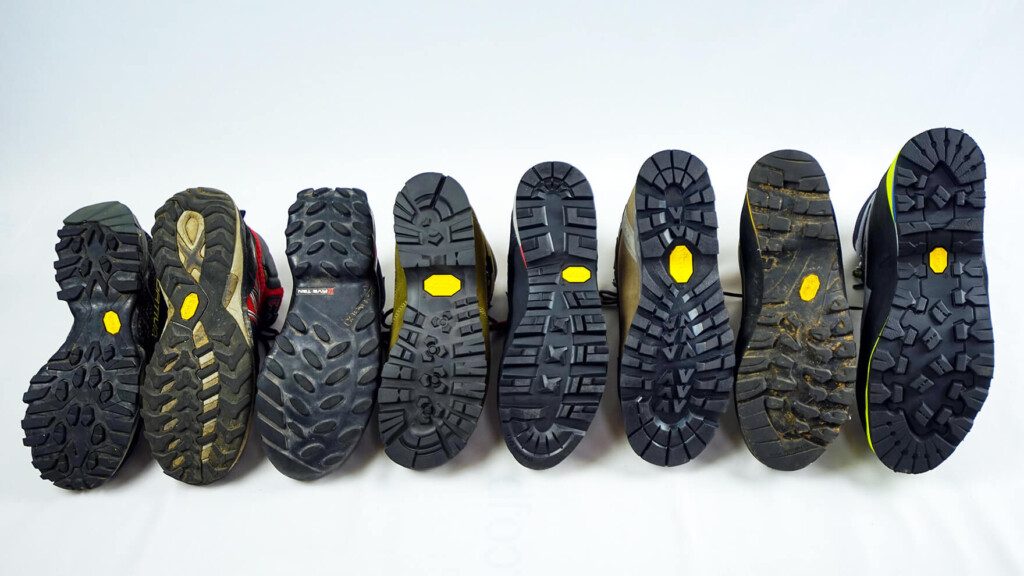
The sole pattern (groove) is optimized for the style that the shoe is aiming for, including its shape, orientation, depth, wide spacing, toe shape, and softness.
Point 5: Weight - Lightness is justice, but let's also know what to lose in exchange for "lightness"
When you wear heavy shoes, you will notice a lot of fatigue. I'm not sure who said this, but there are even saying things like, "A pound reduction in a shoe is comparable to a 5 pound reduction in a back," so it's definitely better to wear light shoes.
However, it is good to remember that this does not mean that it is best to choose light shoes unconditionally. Instead of being light, the ankle area may be unstable, the sole is slippery, or the durability is poor, and there is a possibility that something is being cut off as a compensation for its lightness. The important thing is balance. Consider whether the balance between lightness, safety and durability meets the standards you are looking for.
Point 6: Other good things to check
Waterproof and breathable
The risk of getting wet inside your shoes is immeasurable, as it can easily get wet, such as getting wetting your body temperature being taken away, or the swelling skin can rub and peel off. Furthermore, my feet are sweaty more than I expected, so it's no use waterproofing the outside. Your feet are always at risk of wetting. In areas like Japan where there are high temperatures and humidity and heavy rain, waterproof and breathable treatment of shoes should be considered an essential function .
If it's a trekking shoe from a major manufacturer, I'm sure most manufacturers incorporate waterproof and breathable materials such as Gore-Tex into the shoe fabric, but be careful, inexpensive products that sell for a few thousand yen, often have just water-repellent or non-breathable waterproof features.
By the way, when you think of "waterproof and breathable," you might think that shoes are supposed to be enclosed with a waterproof and breathable membrane made from chemical fibers, but in fact, traditional leather also has natural waterproofing and breathable properties. Recently, there have been more features that combine waterproof and breathable materials to achieve functionality that is comparable to chemical fibers, so the latest leather products are not abandoned.
Utilizing third-party insoles (footbeds)
Removable insoles (footbeds) are standard in most trekking shoes. These fit your feet three-dimensionally into the shoes, efficiently expel moisture from sweat and act as cushions to relieve impact.
This standard one can be used as is, especially if you are not unhappy, but from experience, it is almost impossible to actually get a good fit that fits perfectly for you with a standard insole.
If you want to aim for a more comfortable walking experience that is less tiring and less likely to be worn we recommend that you consider third-party insoles and footbeds . They fill in the gap between your shoes and your feet, improving the fit of the arch and heels, making it easier to walk and less tiring, and even more so that the impact of walking is reduced.
I'd like to write an article about how to choose an insole footbed as well, as it would be a very long time if I talked about this as well, so I'd like to write an article on another occasion. Below is a comparison of the main products a while ago, so please refer to it if you are interested.
Related Articles
Shoelace system
Trekking shoes have also undergone a variety of evolutions in what is called tight fittings. The shoelaces are thin, light and durable, and the holes (eyelets) that allow the shoelaces to pass through and the hooks at the top are made of aluminum, fabric, plastic, and other materials that are durable yet lightweight. Of course, it is not that it is unconditional because it is lightweight, but it also needs to be taken into consideration that it does not easily loosen and its durability is at the expense of its durability. In any case, we recommend that you try on your own when trying on and check the following five points .
- Ease of closing
- Fit when tightened
- (For mid-cut and high-cut models) Ankle fixation feeling
- Try walking as hard as possible to make it easier to loosen up
- Are there any signs of discomfort such as being caught while walking?
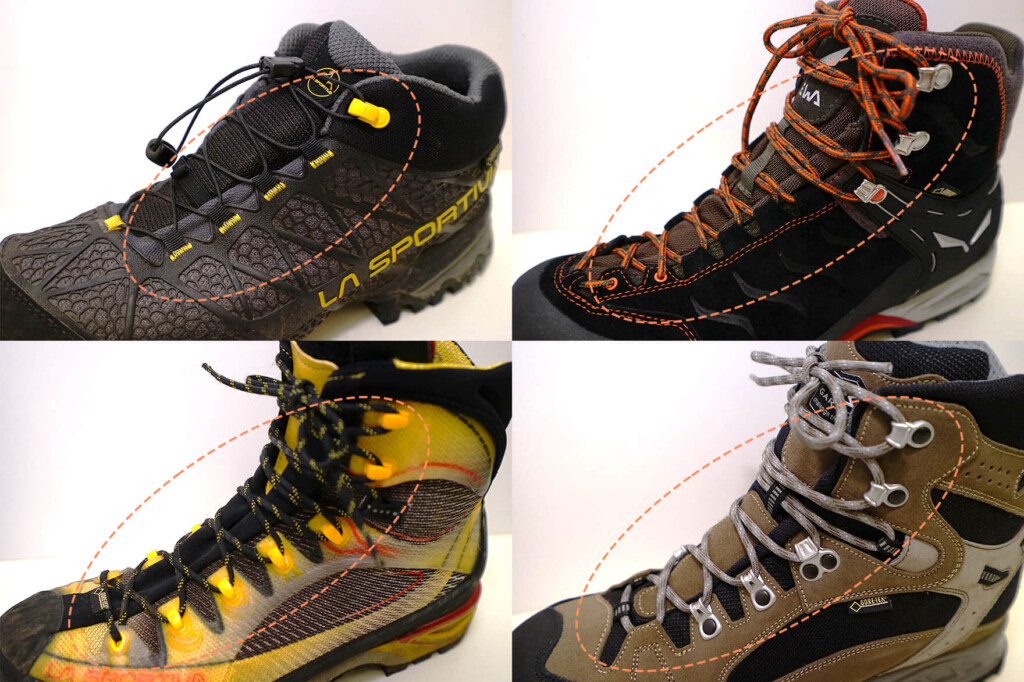
Various shoelaces. Lightness is also important, but when you actually tighten it, you can see that the ease of tightening and difficulty of loosening vary greatly from model to model.
Crumpon compatible
If you are planning a course with snow and ice mixed in, such as winter mountains or a spring mountain with remaining snow, boots with a clampop are essential.
In order to install a clamp, the basic premise is that it must be a boot with a sole that is more than a certain level. Furthermore, if you want to use a one-touch or semi-one-touch clamp, you will need to choose a model with a edge to attach the clamp to both the back and front and back of this boot, so be sure to check that.

If the clamping edges are attached to the front and back, the one-touch crampons are attached (right), and if only the rear is attached (left), the semi-one-touch crampons can be attached, and if none is attached at all, the crampons with tape can be attached. *Since crampons and boots go well together, be sure to actually attach them and check them before use.
Available for men/female sizes, narrow/wide sizes
For a long time, these mountain boots have only been available in terms of length, but recently, various manufacturers have been increasing the number of products available in some models (especially popular models) that fit more people's feet, and in wide (narrow) sizes available in wide (narrow) sizes, which are said to be common among Japanese people. Of course, if you've never thought traditional shoes would fit you easily, but if you've only vaguely understood the size and shape of your feet, these variations may fit you unexpectedly, so it's recommended to try them on at least once in a store, as it's not a waste.
Summary: Only your feet will teach you the best solution to choosing shoes
As I mentioned at the beginning, no matter how great the shoes are, the reality is that in the end, only your feet know whether the trekking shoes are the best for you. Choosing outdoor shoes is complicated, delicate, and honestly, troublesome. How many days did you spend around the store buying a pair of trekking shoes? It's a bit unwilling to have the store clerk put out multiple pairs of shoes you don't know if you're going to buy, but even so, the only way to choose the perfect trekking shoes is to do so, so please feel free to ask for them here. I hope this article will help alleviate that hard work.
In the next part, we have actually tried wearing new and popular models that we have researched and picked out of the hundreds of mountaineering boots on this site, and have compiled a list of carefully selected models by purpose and type as "a pair you should wear right now by purpose and purpose," so look forward to it.


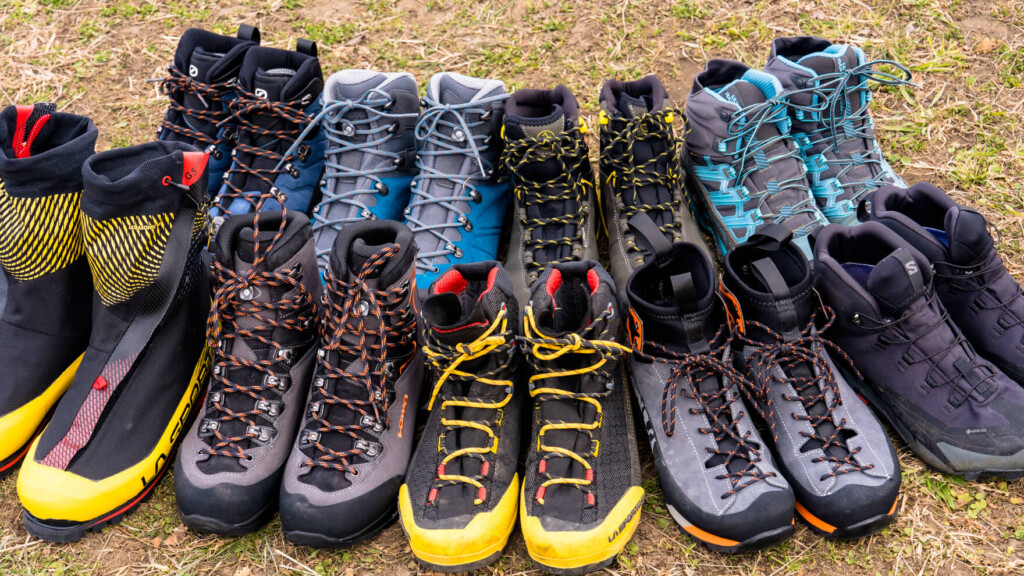








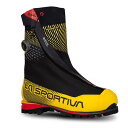

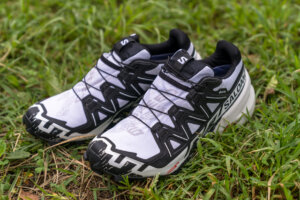
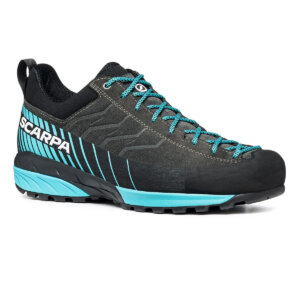
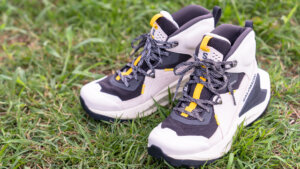

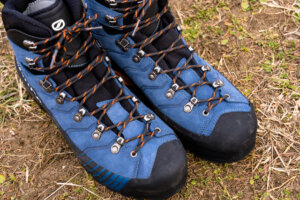
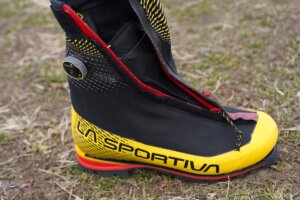
 7 new trekking shoes for 2015, attracting attention from the global outdoor media
7 new trekking shoes for 2015, attracting attention from the global outdoor media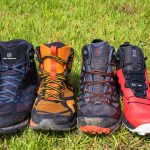 Comparison review: We compared the lightweight hiking boots that are popular with weekend hikers 2018
Comparison review: We compared the lightweight hiking boots that are popular with weekend hikers 2018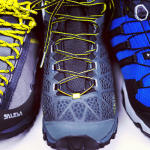 10 pairs of lightweight hiking shoes that you'll want to wear to the fullest [less than 500g per shoe]
10 pairs of lightweight hiking shoes that you'll want to wear to the fullest [less than 500g per shoe]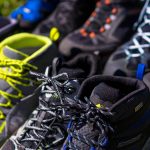 Comparison review: Comparing lightweight hiking boots perfect for day trips and fast packing
Comparison review: Comparing lightweight hiking boots perfect for day trips and fast packing